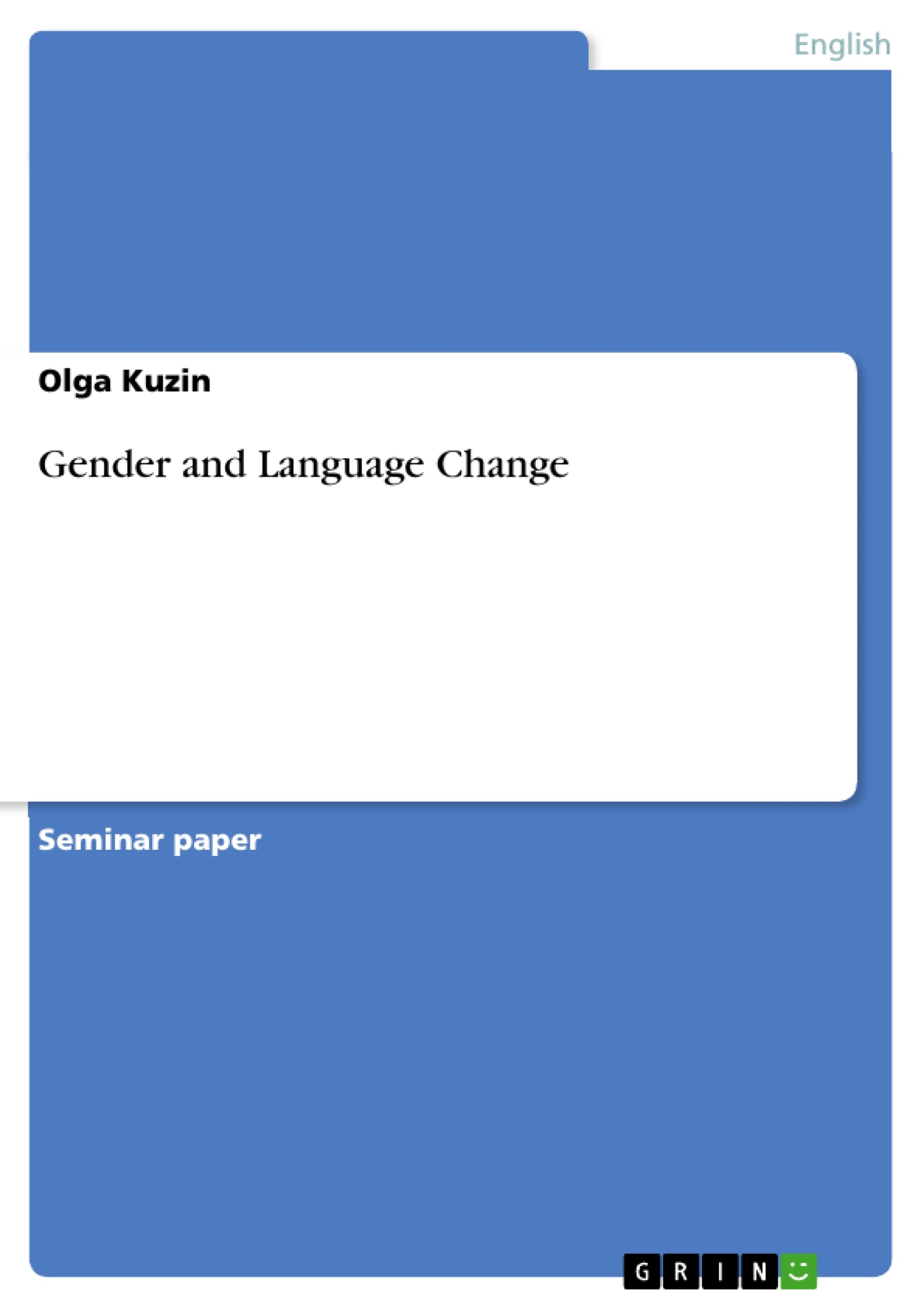Sex differences have always been a subject of interest for human beings. So, such interest in language is not an exception. However, linguists prefer the term gender rather than “sex” because sex has to do with biological distinction; it is “a matter of genes, gonads and hormones” (Talbot 1998: 7). The term gender was also chosen as a neutral, an indiscriminating one (see Nevalainen 2003: 110, Curzan 2004). In contrast to the term sex “gender” refers to a linguistic construct on the one side and to the social construct on the other side. Gender as a linguistic construct relates to a gender system of language which is represented by e.g. the personal pronouns he, she, it or lexical items that “refer to men and women, as well as girls and boys” and which “retain gender semantically in a natural gender system” (Curzan 2004). Language as a social construct relates to the roles of males and females in society. The attitudes towards men and women are reflected in the language. Otherwise, we can observe gender differences analysing certain language patterns. It is assumed that language not only reflects gender division, but also creates and sustains it (Coates 1993: 4). In this paper I will be looking primarily at the impact of gender as a social variable on the English language. I will analyse the language change in the past, namely, in the Late Middle and the Early Modern English periods with help of the historical corpora. The paper should answer the question how the social variables such as gender together with social rank or genre cause change of the linguistic variables such as grammatical constructions from a diachronic point of view. The concept of a historical corpus and the historical background will be explained in order to understand the base of the investigations. Also, there will be a chapter on the present-day investigation on the language variation. Afterwards we should be able to compare the results from the past and present studies.
Inhaltsverzeichnis (Table of Contents)
- Introduction
- Historical background of the Early Modern English (EME)
- The development of the English language during the epoch of the Renaissance (EME)
- The social position of men and women
- Concept of the historical corpus
- Empirical studies
- Synchronic approach of the language change
- Gender differences
- Politeness
- The choice of topics
- Gender themes in writing: sexist and non-sexist language
- Conclusion
Zielsetzung und Themenschwerpunkte (Objectives and Key Themes)
This paper aims to explore the influence of gender as a social variable on the English language, particularly during the Late Middle and Early Modern English periods. Using historical corpora, the study investigates how social factors like gender, social rank, and genre contribute to changes in linguistic variables, such as grammatical constructions. The paper examines the concept of historical corpora, the historical background of Early Modern English, and contemporary research on language variation to provide a comprehensive understanding of gender's role in language change.
- The impact of gender as a social variable on the English language
- The relationship between social factors (gender, social rank, genre) and linguistic variables (grammatical constructions)
- The use of historical corpora to analyze language change
- The historical background of Early Modern English and its influence on language development
- Contemporary research on language variation and its comparison with historical findings
Zusammenfassung der Kapitel (Chapter Summaries)
- The introduction presents the research question and outlines the paper's structure. It defines the concept of gender as a linguistic and social construct and highlights the significance of studying gender's influence on language.
- The second chapter provides an overview of the historical background of the Early Modern English period, emphasizing the social and cultural changes that influenced the development of the language. The chapter focuses on the impact of the Renaissance and the rise of English as the dominant language of science and literature.
- Chapter three delves into the concept of historical corpora, explaining their importance for analyzing language change over time. It discusses the methods and challenges involved in using historical corpora to investigate gender-related language variations.
- Chapter four examines empirical studies that explore the influence of gender on language use, focusing on synchronic approaches to analyzing gender differences in language.
- Chapter five examines the role of gender in writing, discussing the differences between sexist and non-sexist language and the impact of gender-related attitudes on writing styles.
Schlüsselwörter (Keywords)
The key terms and focus topics of the text include: gender, language change, Early Modern English, historical corpora, social variables, linguistic variables, grammatical constructions, gender differences, politeness, the choice of topics, sexist and non-sexist language.
- Quote paper
- Olga Kuzin (Author), 2007, Gender and Language Change, Munich, GRIN Verlag, https://www.grin.com/document/69303



